****** THE EYES AND EARS OF THE DARK CONTINENT ******
"Battle for Maxim's".
The gateway to the Valley of Death.
As soon as he had spotted the "Maxim's" trading post through his binoculars, he halted his column and rode over to his French counterpart (nomically under his overall command) to discuss their approach. After some talk and planning, both agreed to form a "wall of steel" across the valley, with the heavy artillery, supplies and medical units to the rear. A risky business, since the Arabs would have no doubt a lot of mounted troops and once these would be able to break through the line, very little would stand in between the savages and the allied support units. Nevertheless, it was the only way to cover the whole width of the valley...
Thus the French deployed to the left (facing the trading post) with the Indistani to their right and the Bengal lancers (commanded by Hamilton himself) covering the right flank. The (French) artillery was posted in the centre.
Riding back to his troops, Hamilton cursed again; here he was in the middle of nowhere, faced by savage hords, while at around this time his new "toy" ("HMS Oystercatcher") was about to be launched. Damn all skirts, damn all Frenchies !!!! His thoughts were interrupted by the sound of hooves, hundreds and hundreds of'm; the way into the "Valley of Death" was barred and battle about to be joined...
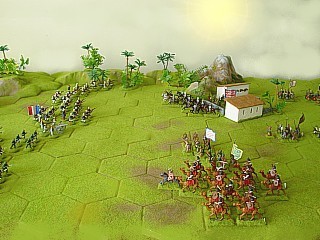
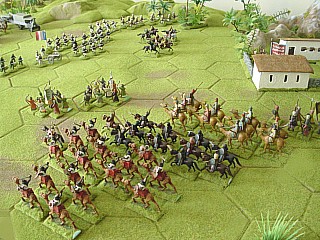
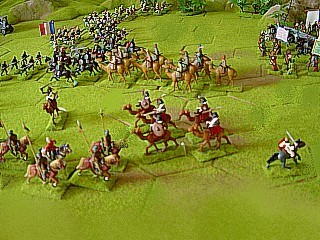
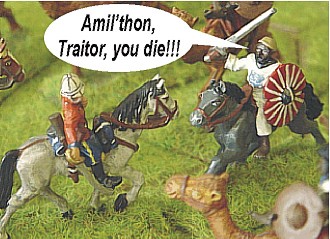
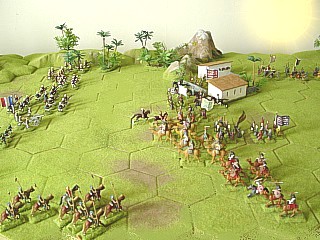
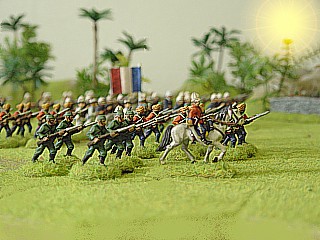
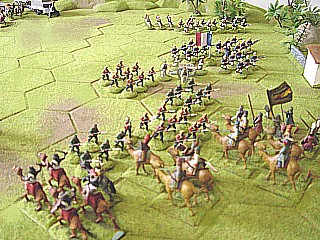
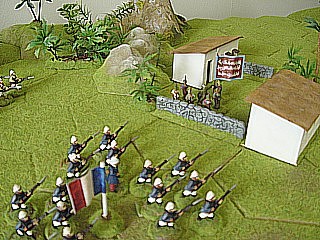
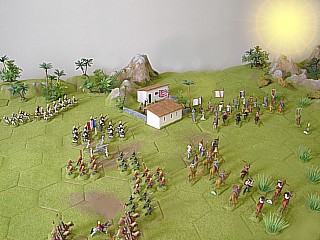
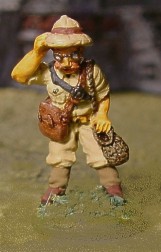
Major Rick (alias Prof. R. Norton)
with "a licence to kill".
After
the battle, the allied commanders decided to make camp near the trading
post and to march into the "Valley of Death" the next day.
Later that night, a Rif tribe party entered the camp under a flag of
truce. They were accompanied by a young man and an elderly lady who
turned out to be Maxim's son and the Belgian Mevrouw (mrs) Van Lancker!
The Tribal Overlord leading the Rif party announced to Lord Hamilton
that the Dahnists had left the Rif under protection of a Rif force,
taking their other prisonsers and the captured artillery with them.
The "DOW" offered to give up young Maxim and Mrs Van Lancker
as a token of his good will in exchange for a ceasefire. Hamilton accepted.
After all, he was here to free the "Four Feathers", not to
continue a bloody war against the Rif...
Still, he knew he would have to return one day to this region: he had
just received a report from Prof. R. Norton, known as "the Perfesser",
but also known (only to a selected few) as Major Rick, commander of
the S.A.S. (Special Afriborian Service), with an appetite for martini's
(shaken, not stirred). Major Rick and his men had entered the Valley
of Death secretly and had discovered several stinking pools of... petroleum.
Wait till the Colonial Office hears about that!
It was decided to send Maxim's volunteers to the basecamp as an escort
for mrs Van Lancker where they were to join the Belgian contingent on
their return to El Tap. Since
Hamilton was short of officers however,
Eduard Geudens was not to be sent home but to join the main force.
TO
BE CONTINUED...